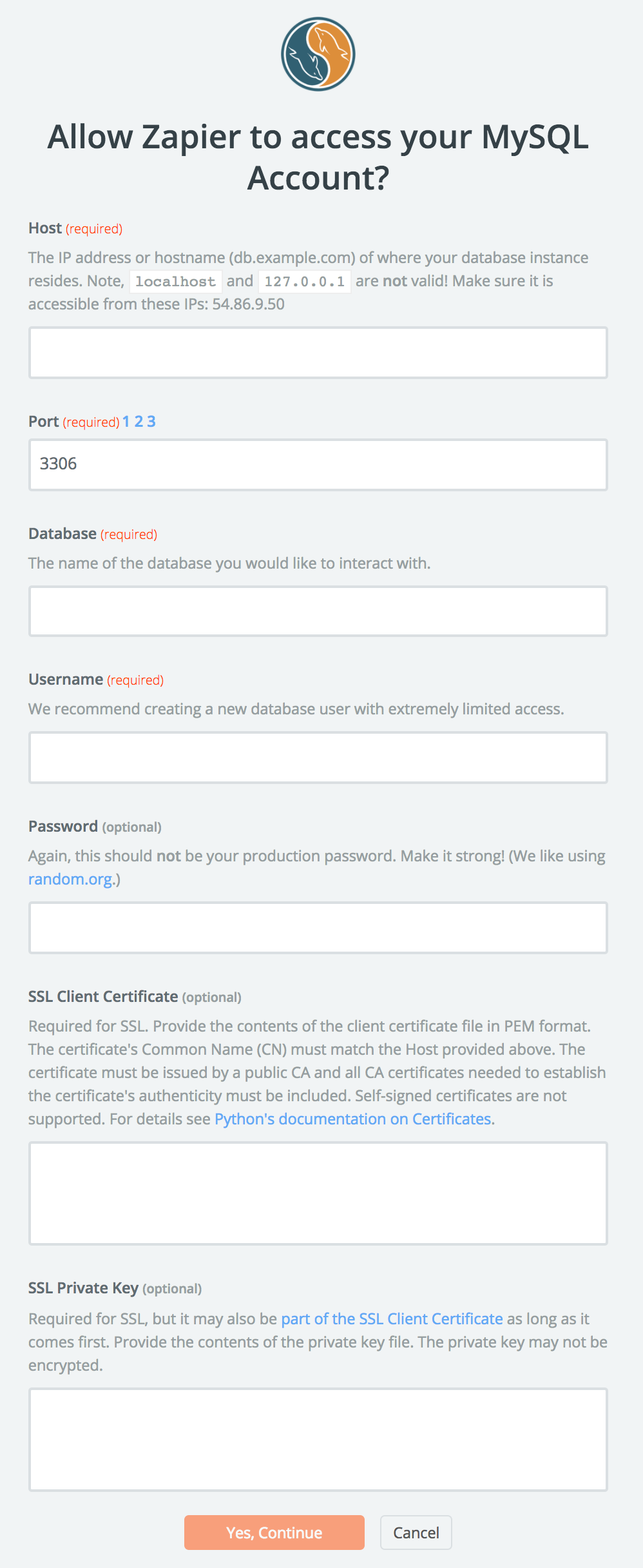

If mysqld notices a table that needs to be automatically checked or repaired, it writes a message to the error log.įind it at one of the following locations, on the MySQL database server host: The log-error file contains information indicating when mysqld was started and stopped and also any critical errors that occur while the server is running.
#Mysql default port how to#
The MySQL official documentation has more details about how to configure the MySQL database.

The MySQL configuration file is located at one of the following locations, on the MySQL database server host: In order to see which MySQL version your system is running, execute the following command: $ mysqld -version A test database only intended for testing.Ĭheck our recommendations for a production server.This user can only connect from the local machine and it is only intended for testing. An anonymous user without remote access to the database server.The root user has remote access to the database. A privileged account with a username of root.The grant tables define the initial MySQL user accounts and their access privileges. Default MySQL user accounts and privileges If present, the installer uses MariaDB and if not, it uses MySQL.ĭepending on which database server (MySQL or MariaDB) is used by the installation, use the appropriate guides in our documentation for database-related operations.
#Mysql default port windows#
Windows native installer users can identify which database server is used in the stack by checking for the presence of the installdir/mariadb directory. Linux and macOS native installer users can identify which database server is used in the stack by running the command below: $ test -d installdir/mariadb & echo "MariaDB" || echo "MySQL" On account of these changes, the file paths and commands stated in this guide may change depending on whether your Bitnami stack uses MySQL or MariaDB. NOTE: We are in the process of modifying the configuration for many Bitnami stacks. Users of Bitnami native installers should refer only to the Approach B sections. NOTE: The Approach A sections referred to below do not apply to Bitnami native installers. Learn more about the Bitnami stack environment and about OS X VMs. On OS X VMs, the installation directory is /opt/bitnami and OS X VM users can click the “Open Terminal” button to run commands. Before running the commands shown on this page, you should load the Bitnami stack environment by executing the installdir/use_APPNAME script (Linux and MacOS) or by clicking the shortcut in the Start Menu under “Start -> Bitnami APPNAME Stack -> Application console” (Windows).


 0 kommentar(er)
0 kommentar(er)
